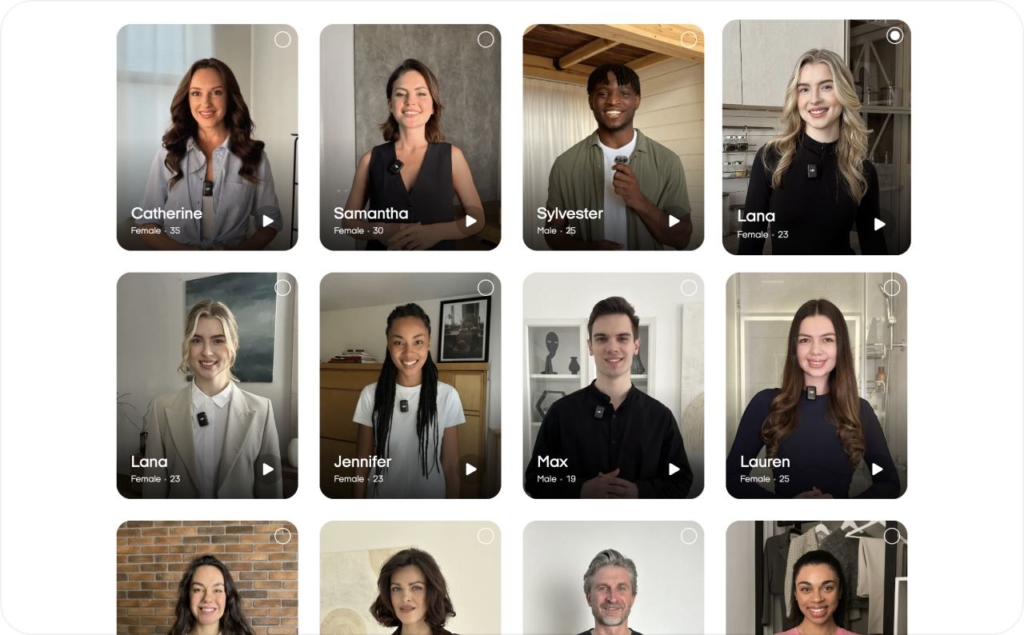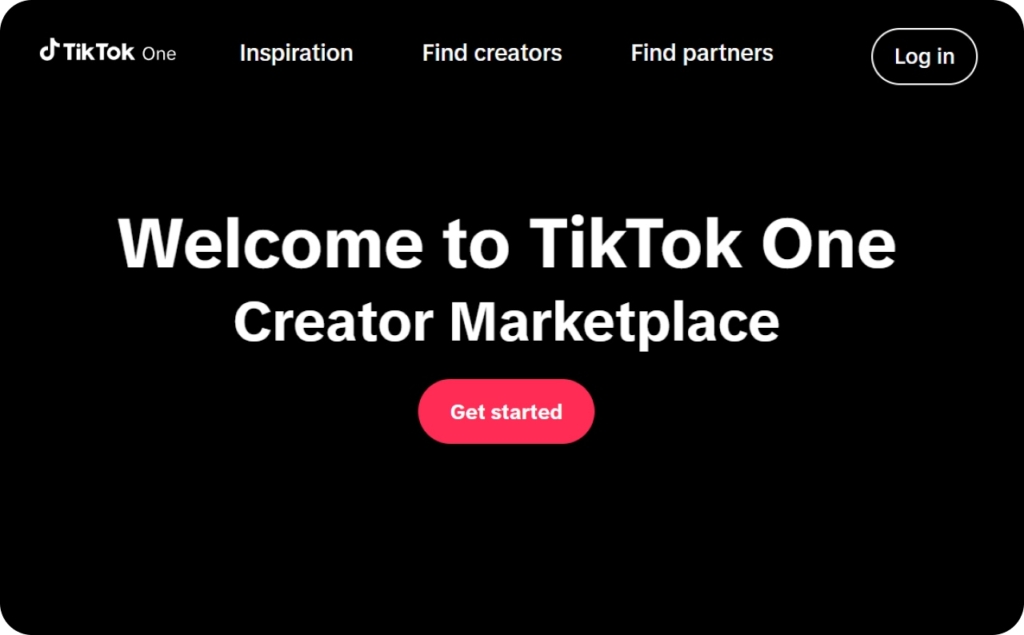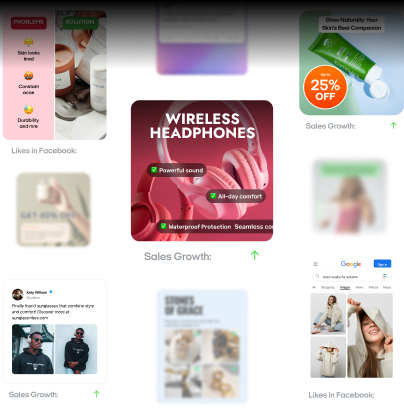UGC creators explained: Why more small businesses work with a UGC creator in 2025
Why are small businesses partnering with UGC creators more than ever? Zeely AI uncovers how authentic, creator-driven content drives trust, reach, and sales growth in 2025.
Platforms like TikTok and Instagram have fueled a 600 million-view hashtag #UGCCreator, turning everyday users into community-powered marketing assets.
Why should it be important for you? If you run a small business and want to stand out without draining your budget, user-generated content offers a digital authenticity that paid ads can’t match. It’s more than a fad — UGC has proven to increase conversions by showcasing real customers sharing real stories.
In this guide, you’ll discover how to tap into peer-driven engagement and transform satisfied buyers into your best brand advocates. Get ready to see how a community-driven approach can boost your visibility and spark meaningful growth.

UGC creators explained: How real content can boost your business
Unlike typical influencers who aim for celebrity status, UGC creators focus on content that feels relatable and community-centered. This change reflects a digital content evolution, where heartfelt stories often outshine glossy ads..
Why is user-generated content more important than ever? Because brands get more likes and comments when they share real stories that feel like everyday life. Nearly 40% of companies name creator-driven UGC as their top social strategy, underscoring an industry-wide pivot toward authentic marketing.
TikTok’s success, with over half its videos coming from everyday creators, further illustrates how community-driven marketing fosters brand trust and organic growth.
So what makes a UGC creator different from a regular influencer? Influencers post polished, sponsored content for big audiences, while UGC creators share low-fi genuine production that feels more personal and relatable.
This difference not only nurtures deeper user engagement but also encourages long-term brand loyalty. When you see real people using a product in their natural setting, skepticism fades and genuine connection flourishes.
Overall, the digital influencer vs. UGC conversation shows a big shift from one-way ads to community-focused storytelling. When brands use UGC creator talent, they build strong social proof, boost credibility, and start real conversations.
Want to see how these creators help meet today’s consumer demand for honesty and transparency? Keep reading to learn how UGC boosts brand loyalty in a crowded digital world.
What is a UGC creator? Definition and evolution explained
A UGC creator — short for user-generated content creator — is an everyday digital content producer who crafts short, narrative pieces, like photos, testimonials, lo‑fi videos, that brands license and amplify across paid and organic channels.
Creator don’t need a verified badge, they thrive on storytelling skill, not follower count. Unlike traditional influencers, they sell assets, not audience reach, making them a plug‑and‑play content studio in your pocket.
From hobbyists to growth engine
The evolution of user-generated content began on ’90s forums where early fans posted unfiltered reviews. YouTube and Instagram democratized video and visuals, birthing the “haul” and “unboxing” era.
TikTok’s 2018 boom then turned raw clips into viral currency, fueling a 15× surge in branded UGC posts. Adobe’s 2024 Creator Economy report notes that 78 % of brands now run at least one always‑on UGC program to combat ad fatigue and accelerate testing cycles.
Organic vs paid UGC
Organic UGC is unsolicited love — a spontaneous before‑and‑after or a fan‑made meme shared peer‑to‑peer. Tweets that include authentic user photos receive 3× more replies than text‑only tweets.
Paid UGC starts with a brief. Creators retain moral rights, while brands get multi‑platform usage for 6–12 months. This setup preserves creative freedom yet guarantees deliverables — three hook variations, multiple aspect ratios, and on‑screen captions if requested.
Brands leveraging asset‑first partnerships cut creative turnaround from weeks to days and lowered cost‑per‑creative by 60 %, according to Reforge 2023 UGC Performance Study. TikTok hook‑rate data shows a 1.8× higher 3‑second watch‑through on UGC than studio ads — proof that lo‑fi authenticity keeps thumbs from swiping.
Mislabeling UGC creators as influencers inflates budgets and skews KPIs. Clear differentiation unlocks faster testing, lower costs, and content that feels like a friend’s recommendation.

Why brands love UGC creators
Modern marketing needs to feel human, scale fast, and stay on budget. UGC video ads check all three boxes. They give brands authenticity and creative variety without the high cost of traditional influencer campaigns.
That mix of relatability and efficiency is why marketers are shifting spend toward UGC. For marketers searching for the benefits of UGC creators, real people telling your story is the first proof — audiences lean in, and conversions follow.
Creators give trust that converts
Traditional influencer posts can feel scripted. UGC feels real because it mirrors day‑to‑day experiences your customers recognize. That instant familiarity builds credibility faster than polished ads ever could.
Numbers back it up. Business Insider reports 79 % of consumers say UGC strongly influences buying decisions, and 84 % of millennials trust content from strangers more than brand messages. Authentic voices move shoppers from scroll to sale.
Business owners spend less, but earn more
Influencer fees add up quickly, and ROI isn’t guaranteed. UGC creators typically charge far less, so your budget stretches further right from the start. Average creator packages on TikTok’s Creator Marketplace cost 62 % less than a single mid-tier influencer post.
The payoff shows in performance data. Nielsen found UGC campaigns can cut cost‑per‑click by up to 50 %. PGA Tour Superstore’s holiday guide lifted conversions 40 % over glossy studio ads, while Gartner notes some brands trace 28 % of total revenue back to UGC partnerships.
Businesses get engagement that scales
UGC doesn’t just lower costs — it boosts interaction. Because the content feels unscripted, it sparks conversations instead of skimming past in the feed. TikTok’s own data shows UGC-style ads drive 22 % longer watch time versus studio spots.
User‑generated videos pull 28 % more engagement than brand‑produced clips. UGC ads can raise click‑through rates by up to 400 %. Those are the engagement wins every marketer wants.
All parties win easy, flexible partnerships
UGC relationships are lightweight. Most brands hire creators on a project basis, avoiding long contracts and allowing quick tests of new ideas. A single UGC brief can generate a library of clips for ads, email, and product pages, reducing creative turnaround from weeks to days.
Simple briefs and clear usage rights keep production moving. “Companies more than ever need to invest in customer‑ and user‑generated content efforts to execute authentic, high‑converting campaigns,” says William Gasner of Stack Influence. He emphasizes why this flexible approach drives results without bureaucratic overhead. Legal teams also favor UGC because usage rights are secured up front, minimizing downstream licensing headaches.
Brands gain fresh perspectives and new audiences
UGC creators often come from diverse backgrounds and niches, introducing angles brands might overlook. By partnering with a mix of voices, you can reach micro-communities that may otherwise remain untapped. According to Forrester, micro-communities foster 25 % higher brand loyalty because consumers see themselves in the content and recognize their own values in the messaging.
When creators draw on their unique experiences, their content resonates with specific segments of your audience. This expanded reach not only grows market share but also adds depth to your brand identity, driving long‑term loyalty.
Creators offer instant social proof
Social proof remains one of the strongest motivators in modern marketing. Seeing real people — not just polished influencers — enthusiastically talk about your product lowers buyer skepticism.
UGC creators double as brand advocates and customers. Their honest, everyday tone feels more believable. When they share their experiences and results with your product, it resonates on a personal level. This genuine endorsement acts as powerful confirmation to anyone on the fence about purchasing.
Campaigns stay adaptable and evergreen
UGC content for e-commerce doesn’t have an expiration date in the same way big-budget studio spots might. Because the content is rooted in real-life experiences, it maintains relevance longer. Plus, creators can rapidly produce new clips tailored to seasonal trends, product launches, or shifting audience interests.
Marketers can also easily repurpose UGC across various channels. A single creator video might find a home on TikTok, Instagram Reels, your website’s testimonial section, and even email newsletters. The evergreen nature of UGC makes it a go-to tactic for brands looking to build a library of content they can refresh and rotate.
As more brands seek authenticity, budget efficiency, and relatable content, the value of UGC creators continues to rise. When real people join your marketing strategy, they bring fresh perspectives, credible recommendations, and flexible, scalable partnerships — precisely what modern brands crave.
Where can you find creators fast
Start with TikTok Creator Marketplace or Instagram Collabs to source talent inside platforms your audience already loves. Both tools now surface creators by historical performance data, saving you manual vetting time.

Need extra vetting? Platforms like minisocial and Billo match brands with proven UGC creators and handle contracts in minutes. If you’d rather create UGC‑style ads in‑house, AI tools such as Zeely AI make the workflow almost instant. Zeely automatically imports product photos, names, and prices from Shopify, generates copy and visuals, and builds short‑form video templates with suggested hooks. You can swap backgrounds, add avatars, and preview multiple variants before exporting. When you’re ready, Zeely pipes the finished assets straight into Meta Ads Manager — so you move from concept to live campaign in minutes, not days.
Starbucks’s #RedCupContest generated 40,000 organic posts in one week, flooding feeds every holiday season since. Coca‑Cola’s “Share a Coke” campaign, fueled by real consumer stories, lifted U.S. sales 7 %. Long‑term, GoPro and Airbnb repost customer clips daily. Those community stories attract millions of views and reinforce brand loyalty year‑round.
UGC creators deliver trust, engagement, and efficiency that scripted campaigns often miss. They scale storytelling while protecting your budget. If you’re ready to build deeper connections without overspending, let real customers lead the conversation. It’s time to make UGC a core part of your strategy.

Choosing between a UGC сreator and an influencer for your brand
As more brands explore community-driven marketing, they often ask: should we partner with a UGC creator or a traditional influencer?
While both can elevate brand visibility, they diverge in cost, content ownership, and digital authenticity. Knowing these distinctions helps marketers and creators pick strategies aligned with their goals.
Who owns the content and how that affects your brand
UGC creators typically produce lo-fi, authentically produced content that either arises organically or through paid commissions. The brand often acquires ownership rights, allowing the content to be repurposed across platforms.
In contrast, influencers generally retain ownership, posting polished, celebrity-driven material on their personal channels. This setup can limit how a brand reuses influencer content or ties it into broader brand-aligned creative campaigns.
Who engages better with your audience
Influencers lean on large followings, spotlighting their personal brand to influence purchasing decisions. Their approach is more celebrity-driven vs. community-driven.
UGC creators, however, center on organic storytelling and relatability, favoring trust-building over high follower counts. Their content often garners higher engagement metrics because it feels conversational rather than promotional, especially vital in an age where consumers want genuine interactions.
What you get for the time and money you spend
Working with UGC creators is frequently more cost-efficient and offers faster turnarounds. A single influencer post can run into thousands of dollars, while a UGC package of photos or videos may cost significantly less.
From a value proposition standpoint, UGC content can be integrated into experiential marketing tactics, like email campaigns, landing pages, and digital ads, making it highly versatile. This curated vs. authentic content debate often ends with brands choosing UGC for quicker production and measurable ROI.
| Feature | UGC creator | Traditional influencer |
| Audience focus | Niche, relatable | Broad, follower-based |
| Content style | Lo-fi, brand-owned, organically driven | Polished, self-owned, celebrity-influenced |
| Cost efficiency | High | Lower |
| Turnaround time | Quick (1–3 days typical) | Slower (scheduling & approvals) |
| Engagement quality | High (trust-based) | Varies (algorithm-dependent) |
| Usage rights | Often brand-owned, reusable in multiple formats | Typically limited or negotiated |
What small businesses should know about UGC creator trends
UGC is poised to dominate the content landscape even more in 2025, driven by technological innovation, shifting consumer expectations, and evolving platform algorithms.
TikTok remains a frontrunner, with 55.7% of all content being user-generated. Even more telling, 18% of creators on the platform now earn their primary income through UGC, signaling the rise of full-time, creator-led content economies.
Use AI tools to save time and personalize your content
Artificial intelligence is accelerating UGC innovation across platforms and creator workflows. Tools like CapCut allow creators to automate editing tasks like captioning, transitions, and background removal — without sacrificing quality or brand alignment.
Platforms like Zeely AI help brands generate UGC-style videos using templates, AI avatars, and AI scripts, enabling rapid production at scale while preserving authenticity.
These solutions support scalable personalization, predictive analytics, and streamlined omnichannel distribution, giving creators and brands alike greater control and speed.
Grow sales through short videos and UGC monetization
Social commerce is forecasted to exceed $141 billion in the U.S. by 2028, driven in large part by UGC ad strategies. Short-form videos and live selling are merging entertainment with conversion, offering creators new revenue streams.
Meanwhile, the broader creator economy is expected to reach $480 billion by 2027, nearly doubling its 2022 size. Subscription models, tiered memberships, and AI-augmented workflows are helping creators build more sustainable digital businesses.
Build loyalty with smaller groups that trust your brand
Consumer fatigue from public feeds is pushing users toward private communities and interest-based networks. This shift opens the door for UGC creators to cultivate deeper loyalty in curated spaces.
Brands can activate these creators to deliver more targeted messaging, foster community engagement, and drive long-term retention with authentic peer-driven content.
What these UGC trends mean for your business
Staying ahead means adopting cutting-edge UGC strategies, tracking consumer trends, and embracing platforms and tools that support efficiency and creativity.
Whether through AI-powered automation or highly personalized storytelling, the creators who adapt fastest will define the future of digital storytelling. Up next, we’ll recap your key takeaways and help you take the first step toward UGC success.
Conclusion and next steps
We’ve explored how UGC creators are reshaping the digital content landscape — from their rise as brand storytelling powerhouses to their growing influence across AI-powered platforms, social commerce, and niche communities.
The key takeaway? UGC isn’t just a content trend — it’s a career roadmap and a brand strategy with measurable returns. If you’re an aspiring creator, now is the time to unlock your potential. Here’s how to get started:
- Refine your niche and define your creative voice
- Build a results-driven portfolio using platforms like CapCut and Zeely AI
- Experiment with AI tools, short-form video, and social commerce formats
- Engage brands with data-backed pitches that highlight your value proposition
- Join or build communities where your content adds value and drives conversation
For brands, the next step is clear: seize the opportunity to work with UGC creators who bring authenticity, cost-efficiency, and built-in engagement. Whether you build an in-house team or tap into creator marketplaces, the return is in both performance and trust.
The future of content is personal, data-driven, and deeply human. Start small, stay real, and let your work speak for itself. Your audience — and your next partnership — is waiting.
Also recommended



